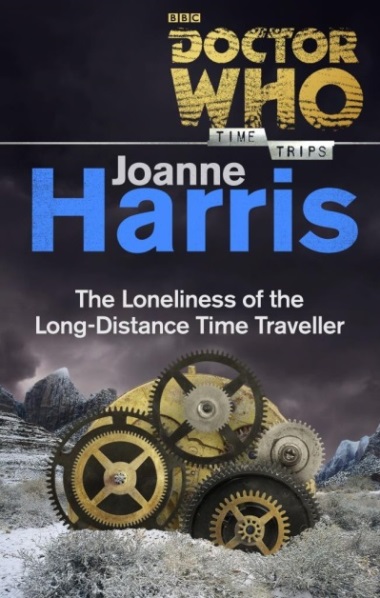You and Who Else
You and Who Else.
Edited by J.R. Southall
Published by Watching Books, 20 November 2015
Proceeds to the Terence Higgins Trust
This is the first time I’ve encountered one of the essay anthologies edited by J.R. Southall. After the Doctor Who-mulling of two You and Who volumes Southall and his contributors have now widened their horizons and assembled a (largely British) television canon over which to chew, from The Quatermass Experiment in 1953 to Jonathan Strange and Mr Norrell in 2015, with a bias towards telefantasy but also including examples from other genres. The works of Oliver Postgate and Peter Firmin or Gordon Murray rub film cans with A for Andromeda or obscure (at least, to me) pre-school programmes such as Bizzy Lizzy. Later, My Parents are Aliens is filed near The Mighty Boosh and Strange. With such eclectic tastes to be served, the tome is a heavy one, almost reaching eight hundred pages. The number of contributors and essays also runs into the hundreds. Writers include familiar names from professional commissions to prolific forum contributors, bloggers and podcasters as well as less well-known people. It’s difficult therefore to generalize about the book’s content.
Several strains of fandom rely on nostalgia and this is well represented here, but the lessons of the past and our emotional relations with it are not always learned. Tales of admiration for television series are too often told with regret for what might have been, or as assertions of identity and individuality which use similar language in each case and rely too much on reflections of the author’s present condition back into a reimagined history. It’s therefore a relief when one reaches an essay based on diary entries or other evidence where the writer makes a serious attempt to recover and assess their past self.
There is so much creativity and imagination in fandom and it’s a pity that too often in the earlier stages of the book a writer’s reaction to or memories of a particular programme is expressed through unconstructive self-criticism or even dismissive self-loathing which rejects or fails to understand the admirable qualities shown by their younger selves. It would be unfair to say that this tendency dominates the entire book. There are always examples of snappy journalistic writing and arguments with which one might disagree, but which are nevertheless built on individual experience. This is a book expressing the identity of two or three television-viewing generations, and identity can be tricksy and intensely felt. Perhaps that’s why among the most successful pieces is one which distills memoir into abstract short fiction.
Contributors come from many different careers. Several have professional experience in broadcasting, and while there are several witty and perhaps even indiscreet memoirs here there are also reminders that even people with what might appear to be a string of enviable production credits have their own moments of self-doubt. The most uplifting essays are often by those who come from outside Britain or from those who are assessing a programme they are too young to have viewed at the time; these might offer a more distinctive account of the author’s personal development, away from the familiar narrative of school and bullying, a foreign interpretation on the way a culture might present itself to itself, or even surprising parallels between a British 1960s play and the American workplace of the 1990s and 2000s.
You and Who Else never claims to be a reference work in any conventional sense. Even if it did, there are too many errors of fact or underappreciations of context for that. The essays which attempt to tell a history of a series at the expense of crowding out its personal impact disappoint, particularly when they tantalize with a couple of sentences of unfulfilled insight. However, it is work for pleasure with the intention of raising money for charity rather than an entry in the broad commercial marketplace; and as a broad-based assembly of the views of a worldwide community of literate commentators, all writing somewhere in a tradition of self-improvement and in celebration and defence of a populist creative form, You and Who Else is a worthy addition to the bookshelf even if a more readable book might have been achieved by removing some of the material and concentrating on the most imaginative responses to the brief.




 This seventh entry in the Time Trips series of e-books is the work of Joanne Harris, and sees the Third Doctor on the brink of oblivion as he struggles to hold back the deadly radiation he was exposed to on Metebelis Three. The Doctor is the only series regular character to feature, and that is because of his predicament in trying to land back 'home' - i.e. UNIT HQ. After the TARDIS is instead forced down into a Time Paradox ensnared village, with a 'Groundhog Day' style routine questions abound. But soon it is clear that the Doctor must somehow save the day once again - despite his very weak condition.
This seventh entry in the Time Trips series of e-books is the work of Joanne Harris, and sees the Third Doctor on the brink of oblivion as he struggles to hold back the deadly radiation he was exposed to on Metebelis Three. The Doctor is the only series regular character to feature, and that is because of his predicament in trying to land back 'home' - i.e. UNIT HQ. After the TARDIS is instead forced down into a Time Paradox ensnared village, with a 'Groundhog Day' style routine questions abound. But soon it is clear that the Doctor must somehow save the day once again - despite his very weak condition. 






